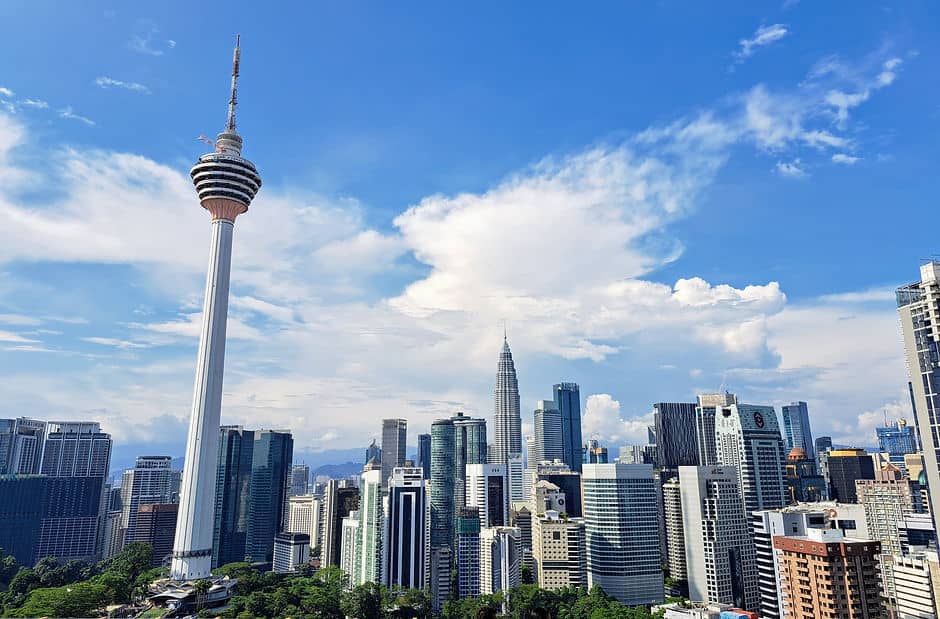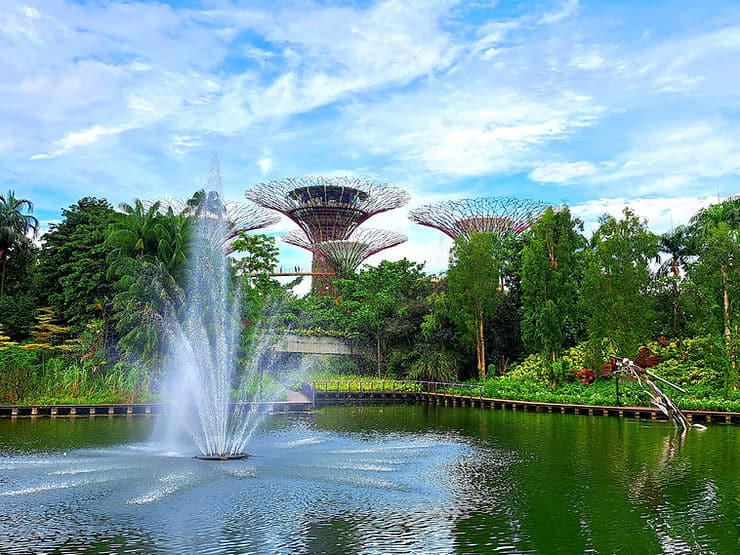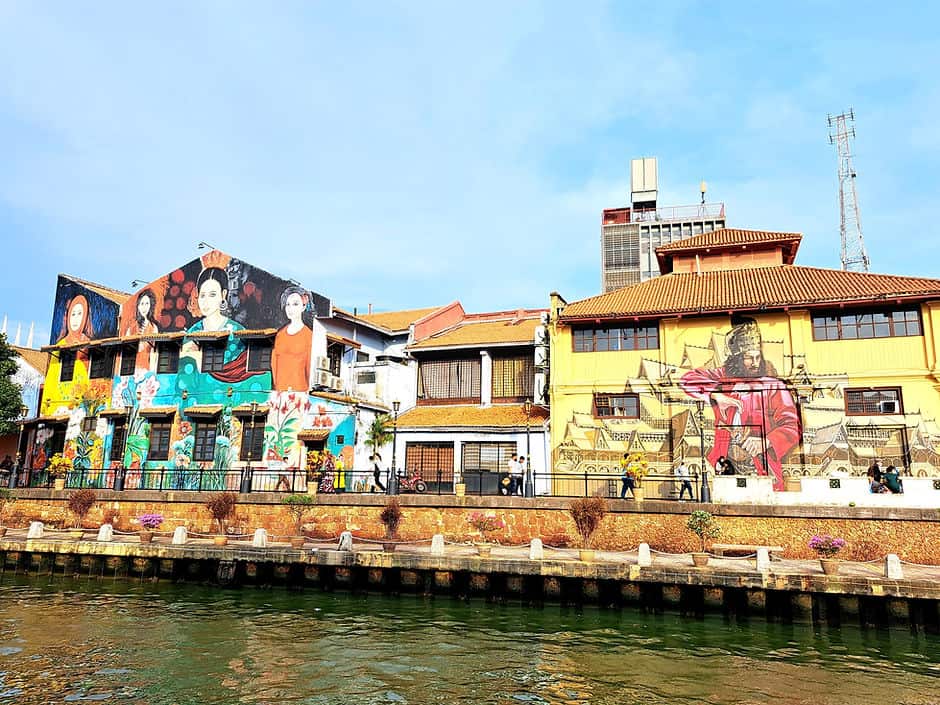
This post may contain affiliate links. I receive a small commission if you use these links, with no extra cost to you.
Malaysia is a beautiful, diverse country in South East Asia. Often missed off the usual South East Asia backpacking route, Malaysia is definitely worth considering. It has so much to offer, from the soft sandy beaches and tropical islands off Malaysia’s coast to the heritage town of Melaka and the capital city of Kuala Lumpur.
Spend 2 days in Penang and see the famous street art and immerse yourself in the local culture. Malaysia is also great for those wanting to get off the beaten track and into nature, with the lush rain forests of Borneo and tea plantations of the Cameron highlands.
Before you start planning your trip to Malaysia, you’ll need to know the best ways to get to Malaysia and how to get around, as well as key traveller’s tips on what you should be aware of. To help you, I’ve put together 16 things that you should know when planning a trip to Malaysia.
Overview
1. Check if you need a visa
2. Getting to Malaysia
3. There are two parts to Malaysia
4. Getting around in Malaysia
5. Expect public transport to be late
6. Local transport is very cheap
7. Prepare to pay a bit more for alcohol
8. Watch out for additional taxes and charges
9. Many hotels and hostels will ask for a security deposit
10. The price of accommodation is higher but the quality is lower
11. Dress appropriately
12. You don’t need lots of cash
13. English is widely used
14. Internet is widely available but not super fast!
15. It is hot and humid!
16. Don’t drink the tap water
16 things you need to know before planning a trip to Malaysia…
1. Check if you need a visa
Visitors from most countries are not required to apply for a tourist visa beforehand. A visa stamp is given on entry to Malaysia and you will be given between 14 – 90 days for a single entry visa. Check the Malaysian government website for up to date visa information for your country.
2. Getting to Malaysia
The best ways to enter Malaysia are either by air or by land…
By air
Kuala Lumpur’s International airport (KLIA) is the main airport for flights into Malaysia and is well connected with the rest of the world. Penang is also another popular choice for international arrivals, though prices tend to be higher into this airport.
If you are arriving into Malaysia at KLIA, you can take a bus or the KLIA Transit directly to KL Sentral station, in the heart of Kuala Lumpur city. The KLIA Transit costs RM 55 (£10) per person and takes approximately 40 minutes. The bus costs RM 15 (£2.70) and will take between 40 – 75 minutes, depending on traffic. (If you are travelling from KL Sentral to the airport, the location of the airport bus is not that obvious. In between the KLIA Transit ticket counter and the escalators to NU Sentral shopping mall is an exit door, go through there and take the escalators underground – this is where the buses depart from and where the bus ticket counters are).
You can also get the airport transit to the TBS station, just outside of Kuala Lumpur city and from here there are buses that run to various destinations all over the country.
By land
If you are travelling from Singapore, you can get a bus directly from Singapore to Johor Bahru, Melaka or Kuala Lumpur. There is also a land border between Thailand and Kuala Lumpur in the north of the country. Check the 12go website for all buses between Thailand and Malaysia and Singapore and Malaysia.
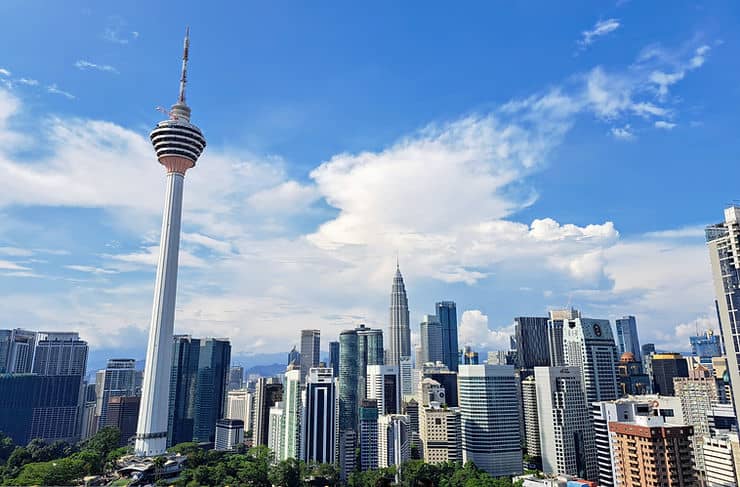
3. There are two parts to Malaysia
Malaysia is divided into two main areas; the Peninsula and Malaysian Borneo. The Peninsula is the ‘main land’ area which borders Thailand. If you only have a couple of weeks in Malaysia, it is probably best to stick to the Peninsula. Malaysian Borneo is perfect for travellers who want to get off the beaten track and go jungle trekking. It is also well known for being one of the last places you can see orangutans in the wild! If you’re planning to visit Malaysian Borneo, make sure you plan ahead. The best way to see this beautiful part of the country is with an organised tour and the best ones get booked up well in advance.
4. Getting around in Malaysia
Malaysia has modern roads with motorways and there are many bus companies linking the major towns and cities. The buses are very low cost and surprisingly plush, with big, comfortable seats. 12Go and busonlineticket are both great sites for booking buses in Malaysia. We used KKKL for most of our journeys and had good experiences with them. Note that if you are getting the bus in or out of Kuala Lumpur, most of the buses will pick up and depart from TBS, just on the outside of the city. There are trains connecting Kuala Lumpur city centre and the TBS. You can also pick up the KLIA Transit from here if you are heading straight to the airport. (Note: If you are catching a bus from KL TBS to elsewhere in Malaysia, arrive early. You will need to swap your electronic ticket for a paper one and the queues at the ticket counters in TBS are huge!)
Another way to get around Malaysia is by train. Though it can be more expensive than the bus, the Electric Train Service (ETS) is the fastest way of travelling between large cities in Malaysia. Check out the website to see a route map and to book tickets.
5. Expect public transport to be late
As is common with most of South East Asia, it seems that nothing runs on time in Malaysia! This is especially true if you are using long distance buses. If you have a travel day with a connection, make sure that you leave plenty of time between your two journeys, as it is more than likely that your bus will arrive late and also take longer than expected. That being said, I do think the buses we travelled on in Malaysia were a lot more organised than in Thailand!
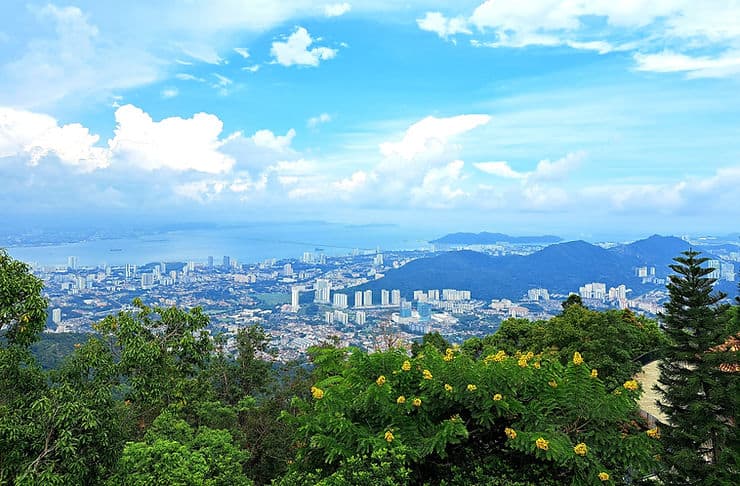
6. Local transport is very cheap
The local buses and transport systems in Malaysia are really cheap. Kuala Lumpur has a fantastic integrated rail network connecting all parts of the city. It is really easy to navigate and very low cost. In places like Penang, you will find that the local buses are also very inexpensive. We took a 40 minute bus ride which cost just 36p!
7. Prepare to pay a bit more for alcohol
Whilst alcohol is widely available in Malaysia, it is more expensive, especially if you prefer wine or spirits. Instead, try some of the delicious fruit teas or smoothies which you will find all over Malaysia.
8. Watch out for additional taxes and charges
Many restaurants and hotels or hostels will add tax on top of the advertised cost. Just make sure that you check the small print when booking your accommodation. When eating out, most of the menus will have small print at the bottom which will tell you how much tax (and service charge) will be added to your bill on top of the prices listed. Just make sure you check this beforehand, especially if you are on a budget.
9. Many hotels and hostels will ask for a security deposit
It is not uncommon for hotels and hostels to ask for a cash deposit when you check in. This is usually in case you lose your room key. They should stipulate this when you make the booking, so just make sure you have a little bit of cash ready for when you check in – and don’t forget to collect it again when you hand your key back in and check out! I found booking.com to be really helpful when searching for accommodation in Malaysia as it had quite a lot of reviews, which you can filter by most recent.
10. The price of accommodation is higher but the quality is lower
Compared to other places in South East Asia, the accommodation in Malaysia is more expensive and unfortunately the standard is lower. Whilst in Thailand or Vietnam, £10 per night would get you a lovely en-suite room, perhaps with a balcony. You would be looking at a small room with a shared bathroom with no window in Malaysia for the same price. Although, to balance this out, the cost of transport in Malaysia is cheaper than elsewhere in South East Asia and you can eat out very cheaply too. So, don’t get hung up on the price of accommodation, be prepared to spend a little more on this, but just know that you will save money elsewhere. It is absolutely possible to travel in Malaysia on a backpacker’s budget.
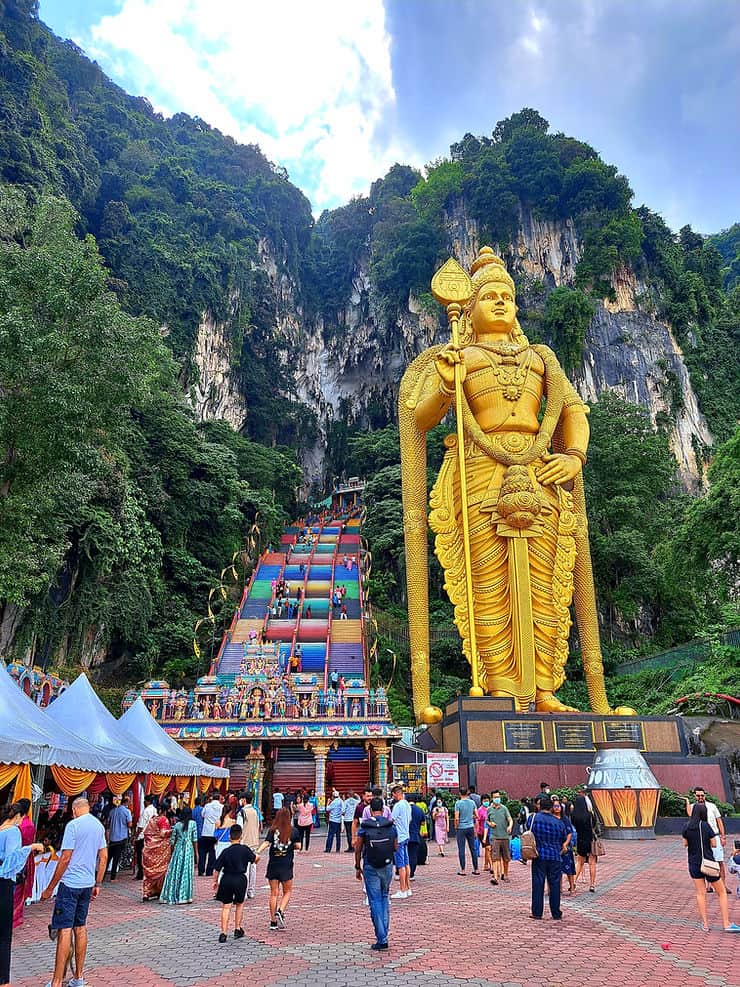
11. Dress appropriately
Malaysia is a predominantly Muslim country and therefore you should make sure that you dress appropriately (particularly women). In modern places like Kuala Lumpur, this is less of a concern if you are just strolling around the city, and you will see plenty of women in shorts here. However, when you are visiting places of worship, make sure that your legs and shoulders are covered. I always bring a light scarf / sarong with me when travelling in Southeast Asia so I can easily cover myself if needed. (It can also double up as a beach blanket and something to keep you warm on the air conditioned buses!) You may also need to remove your shoes before entering temples.
12. You don’t need lots of cash
Most restaurants and shops accept cards so you won’t need to have lots of cash with you, especially in the larger towns and cities. If you do need cash, ATMs are everywhere, so you won’t have a problem getting hold of some. I withdrew money twice in Malaysia, once with a local bank and once with HSBC and neither of them had withdrawal fees, but check with your bank as there may be charges from them. I have a Starling card which I use for travel and highly recommend as there are no withdrawal fees abroad.
13. English is widely used
Most people speak English and there are English instructions everywhere so language barriers should not be a problem here. But as always when travelling in a foreign country, picking up a couple of their local phrases is always nice and goes a long way with locals.
14. Internet is widely available but not super fast!
At least, this is my experience of it. Whilst the internet at our accommodation was OK most of the time, it wasn’t the fastest. Our data sim also had very poor signal. Usually, my husband and I only buy one sim card with unlimited internet and then hotspot from that, but the signal was so poor it wouldn’t connect. Public wifi (outside of accommodation) is not as abundant as I had expected and again, I found the signal to be poor. The main takeaway – if you need to access anything whilst you’re out and about, download it beforehand! I always download an offline google map and offline google translate for this very reason.
15. It is hot and humid!
When is the best time to travel to Malaysia? Well, the weather in Malaysia is very hot and humid pretty much all year round! There are two main weather seasons in Malaysia: wet and dry. The west and east coast have their wet seasons at different times, meaning that Malaysia is great to visit all year round. The wet season on the east coast is between November and February, where you can experience heavy downpours. Many of the beach resorts will close during this time. On the west coast, the wet season is slightly lighter and is between April – October. Downpours are usually just short showers. However, expect to have downpours all year round in places like Kuala Lumpur where temperatures can soar and the humidity is high.
16. Don’t drink the tap water
Like most Asian countries, it is not safe to drink the tap water. Buying bottled drinking water is very inexpensive and most hostels and accommodation have filtered water where you can fill up your own water, so don’t forget to pack your reusable water bottle.
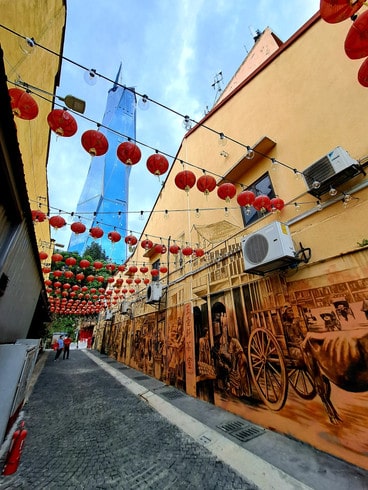
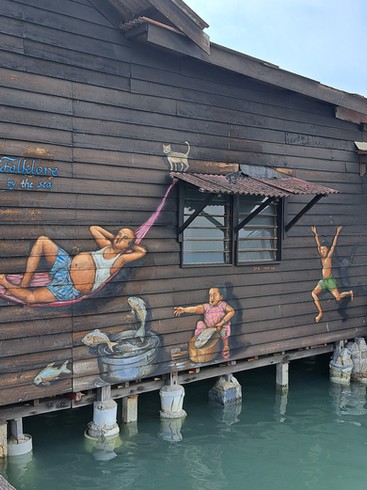
Street art in Kuala Lumpurs’ Chinatown (L) and at Chew Jetty in Penang (R)
That wraps up my list of 16 things you should know before travelling to Malaysia. I really hope that you add this beautiful country to your South East Asia itinerary and enjoy every moment of exploring!
First time travelling in South East Asia? Make sure you check out my 50 essential travel tips to help your trip go smoothly!
Pin this post for later!

